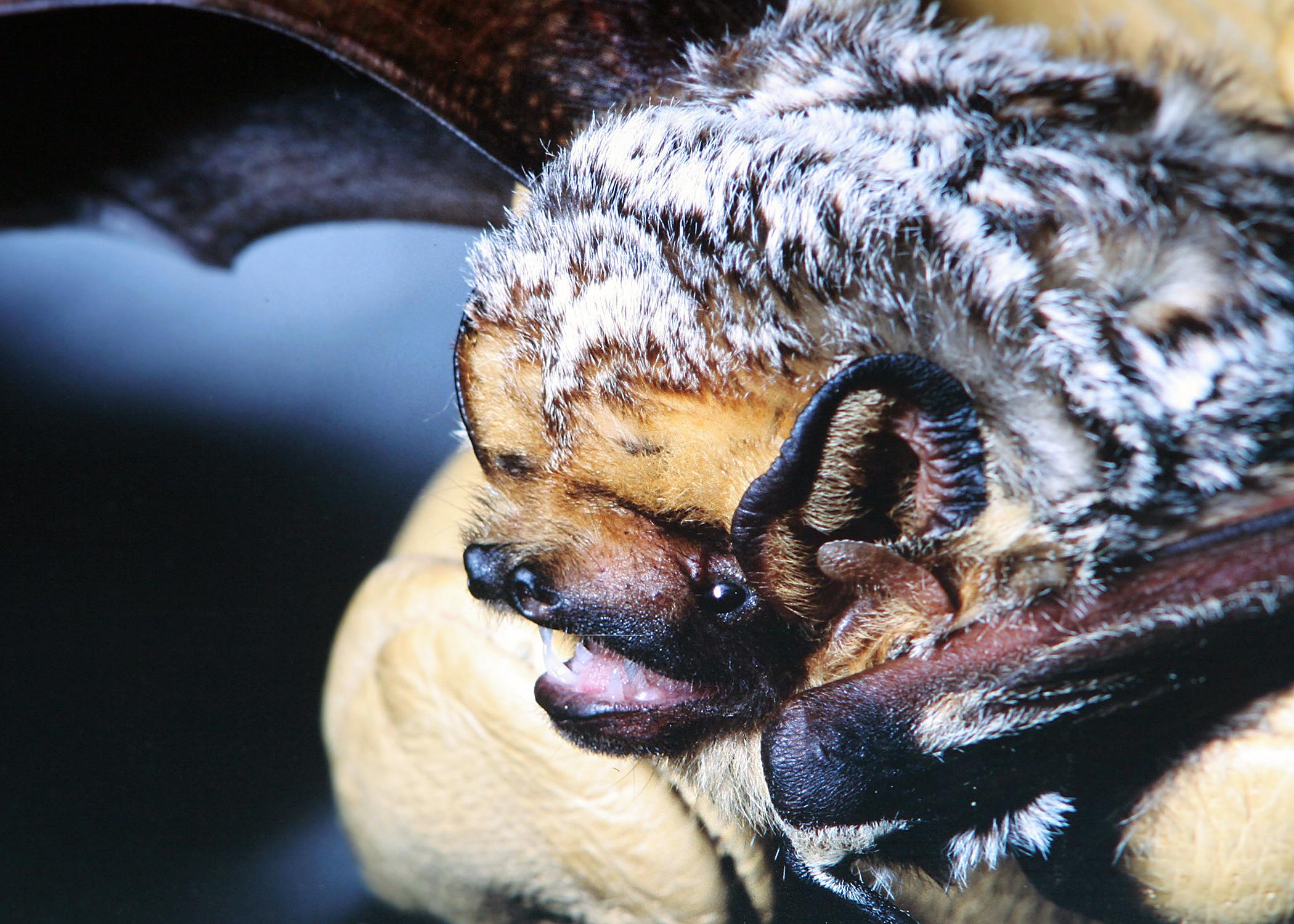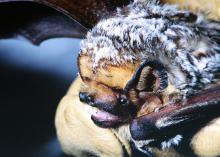Information Possibly Outdated
The information presented on this page was originally released on October 24, 2014. It may not be outdated, but please search our site for more current information. If you plan to quote or reference this information in a publication, please check with the Extension specialist or author before proceeding.
The truth about bats is not so frightening
MISSISSIPPI STATE -- Bats are popular, but often misunderstood, Halloween symbols. These strange-looking mammals generate fear among children and adults alike, but the truth about bats is really quite fascinating.
With more than 1,200 species worldwide, bats are divided into two suborders -- Microbats and Megabats. All bats have webbed wings, making them the only mammal capable of true flight. Bats are present throughout the world, with the exception of Antarctica and the northernmost parts of North America, Europe and Asia.
Bats are nocturnal, which means they are active in the hours between dusk and dawn. However, some bats can be seen flying during the day or at dusk and dawn.
Microbats’ senses of smell and hearing are very acute. This type of bat uses echolocation to hunt and fly in the dark, emitting sounds that bounce off objects in its path. The direction of the returning sounds alerts the bat to the identity of obstacles to avoid or food to catch and eat.
Megabats, on the other hand, have big eyes and small ears and do not use echolocation. They do have a great sense of smell, though, and use it to find ripe fruit.
Insectivorous bats can eat hundreds of insects in just a few hours, performing a vital service to many agricultural areas by reducing the need for pesticides. They also eat mosquitoes and help to reduce the spread of mosquito-borne diseases.
Fruit-eating bats help with seed dispersal of several important crops, including figs and cacao, which is used to make chocolate. Bananas, dates, coconuts, cloves, vanilla, Brazil nuts, avocados and other fruits depend on bats for pollination.
Regardless of where they live in the world, bats spend their days raising the young and hibernating in roosts. A bat roost can be a cave, rock or tree crevice or foliage. In urban areas, bats may roost under the eaves of houses, under bridges or in human-made bat houses.
Bats roost by hanging upside down. This posture makes it easier for them to fall into flight. Some bats huddle tightly together to conserve heat and regulate body temperature, especially in winter hibernation roosts.
White-nose syndrome is an emerging and potentially devastating threat to bat populations in North America. This disease is identified by a cold-loving white fungus on the faces and wings of infested bats.
White-nose syndrome causes bats to awaken more often or emerge early from hibernation. These behaviors deplete the bats’ fat reserves and result in death by starvation or freezing. The syndrome has been confirmed in several known bat winter hibernation areas in north Mississippi and most of Tennessee. Mortality rates of infected colonies can be as high as 90 to 100 percent.
So should you be afraid of bats? If left alone, bats are harmless. If you encounter a bat that accidentally enters your home or other building, don’t panic. Oftentimes, it will leave on its own through an open window or door. Once it leaves, close up any potential entryways.
If you find an injured bat or a bat lands on the ground, do not touch it with your bare hands. It may feel threatened and bite in self-defense, and bats are known to carry rabies. Instead, cover the bat with a small container, gently slip a piece of cardboard under it and wait until dusk to release it outside.
For more information about bats common to the Southeast and how to attract them to your yard, visit http://www.fws.gov/Asheville/pdfs/beneficialbats.pdf.

Editor’s Note: Extension Outdoors is a column authored by several different experts in the Mississippi State University Extension Service.







